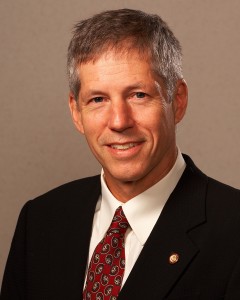Structural Diagenesis at the Bureau
Established in 1909, the Bureau of Economic Geology in the Jackson School of Geosciences is the oldest and second-largest organized research unit at The University of Texas at Austin. The Bureau conducts basic research–including the Structural Diagenesis Initiative–as well as applied and basic research focusing on the intersection of energy, the environment, and the economy, where significant advances are being made. The Bureau partners with academic institutions, federal, state, and local agencies, industry, nonprofit organizations, and foundations to conduct high-quality research and disseminate the results to the scientific and engineering communities as well as to the broad public.
Structural Diagenesis Research Program
Accurate predictions of natural fracture flow attributes requires an understanding of the underlying mechanisms responsible for fracture growth and aperture preservation. Reconstructing the timing and rate of natural fracture pattern development and porosity creation and destruction is essential for progress. By using advanced microstructural imaging methods on core data sets and carefully selected outcrop examples, and the cross-disciplinary perspective of structural diagenesis, breakthroughs have been made on hitherto refractory problems of fracture characterization.
Structural diagenesis is the study of the relationships between deformation or deformational structures and chemical changes to sediments. The Structural Diagenesis Initiative at The University of Texas supports research and student training on mechanics, structure, and geochemistry and the increasingly important results of these linked processes in sedimentary basins that are of great intrinsic and practical interest.
Dr. Stephen E. Laubach leads structural diagenesis research within The University of Texas. Laubach is founder and co-PI of the Fracture Research and Application Consortium and the Structural Diagenesis Initiative.
Laubach’s interests include fractured and unconventional reservoirs, and microstructural methods in structural geology research.
Laubach was a member of the AAPG Executive Committee and AAPG Elected Editor from 2010-2013 and served as a Co-opted Member of the Petroleum Group Committee of the Geological Society of London from 2008 to 2012. He was a Distinguished Lecturer for AAPG in 2010-2011 and Distinguished Lecturer for SPE in 2003-2004. He was a member of the Committee to Assess the Science Proposed for a Deep Underground Science and Engineering Laboratory, National Research Council, 2010-2011 and the Committee on Advanced Drilling Technologies, National Research Council, 1992-1994. He served as co-Chairman of the First North American Rock Mechanics Symposium in 1994.
Laubach serves as a member of the Council on Chemical Sciences, Geosciences and Biosciences (2015-present), and served as a member of the Council on Earth Sciences, U.S. Department of Energy, Office of Science (2013–2015).
With Rob Lander he received the recognition of the Outstanding Contributions in Geoscience Research–Best University Research at the U.S. Department of Energy Symposium Flow and Transport: from Pore to Reservoir Scales in 2004.
Dr. Laubach supervises graduate student research in structural geology and structural diagenesis in the Jackson School of Geosciences.
The following papers reflect some of Laubach’s current research interests:
Spatial arrangement of faults and opening-mode fractures Laubach, S.E., Lamarche, J., Gauthier, B.D.M., Dunne, W.M., and Sanderson, D.J., Journal of Structural Geology 108, 2-15 [2018]. | view doi:org.10.1016/j.jsg.2017.08.008
Insights into rates of fracture growth and sealing from a model for quartz cementation in fractured sandstones Lander R.H., Laubach, S.E., Geological Society of America Bulletin 127/3-4, 516-538. [2015] doi:10.1130/B31092.1 | view
A universal power-law scaling exponent for fracture apertures in sandstone Hooker, J.N., Laubach, S.E., Marrett, R., Geological Society of America Bulletin 126/9-10, 1340-1362. [2014]. doi:10.1130/B30945.1 | view
Microfractures: a review Anders, M.H., Laubach, S. E., Scholz, C.H., Journal of Structural Geology 69/B, 377-394. [2014] doi:10.1016/j.jsg.2014.05.011 | view
Structural diagenesis Laubach, S.E, Eichhubl, P., Hilgers, C., Lander, R.H. Journal of Structural Geology 32/12, 1866-1872. [2010] doi:10.1016/j.jsg.2010.10.001. | view
Mechanical and fracture stratigraphy Laubach, S.E., Olson, J.E, Gross, M.R., AAPG Bulletin 93/11, 1413-1426. [2009] | view
Practical approaches to identifying sealed and open fractures Laubach, S. E., AAPG Bulletin 87/4, 561-579. [2003] | view
 SPE Reviewing Recognition
Editorial Board Service
|
Petrology Research | Outcrop and Core Studies
A sound conceptual framework of fracture mechanics is needed to understand fracture evolution. But this framework is insufficient to understand fracture porosity evolution in deeply buried sedimentary rocks. Accounting for diagenesis is indispensable in understanding the porosity structure of fractures growing at depth in sedimentary basins. It would be surprising if fractures that formed in the presence of reactive fluids and high temperatures were not subject to the same precipitation and dissolution phenomena that affect other pores in these rocks. Among these are thermally driven processes that are sensitive to rock surface area.

Scanning-electron-microscope images of structural diagenetic textures within fractures. The linear feature in the center is a cement deposit called a bridge formed during fracture opening. Such bridges allow researchers to measure opening rates, information that was previously inaccessible. Laubach et al. 2004.
A program goal is mechanical models that incorporate cementation in fractures and the rock mass. This is a central but little explored topic in fracture characterization and prediction.
Our approach combines fracture mechanics and diagenetic modeling, but an essential part of the research program is thorough documentation of linked structure over all scale ranges and description of fracture and fault petrology and geochemistry in core and outcrop examples.
Methods include high-resolution descriptions of fracture and cement microstructures, quantitative analysis of fracture sizes and patterns, fracture-mechanics-based geomechanical modeling, fluid-inclusion analysis, rock and fracture property testing, diagenetic modeling, and experimental structural diagenesis–linked geomechanical and cement precipitation tests–conducted with a strong emphasis on cross disciplinary insights.
The aim is to further develop an understanding of how fracture growth and diagenetic alteration interact to systematically create and destroy fracture porosity.
- See the Fault Diagenesis research tab for more information on SDI work on faults.
- See the Field Studies page for more information on SDI outcrop work.
Information about the SEM CL Facility




